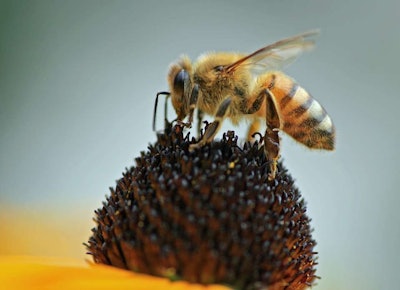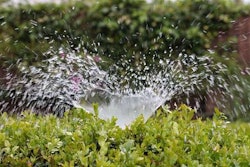
The complaints against Dr. Ben Woodcock from the Centre of Ecology and Hydrology (CEH) are coming from Bayer and Syngenta, which both helped partially fund the study. The rest of the research was paid for by the Natural Environment Research Council.
The experiment focused on the impact of two neonics, clothianidin made by Bayer and thiamethoxam made by Syngenta, on both honeybees and wild bees in three different European countries.
The results varied in the countries with Germany’s bee population thriving despite the usage of neonics while the bees in the United Kingdom and Hungary suffered from worker population decline and struggled to reproduce.
When Woodcock released the study and had it published in the journal Science, both companies claimed the researchers were overstating the threat of neonics.
“We’re quite frustrated about how these results have been portrayed,” Dr. Julian Little, Bayer’s head of U.K. government media relations, told Energydesk. “The reality seems to be a long way away from the headline.”
Meanwhile Syngenta’s environmental specialist Peter Campbell says that CEH misrepresented the study and that the full results show no effect on the majority (238 of 258) of potential effects measured.
Woodcock has not appreciated these insinuations and has retaliated by telling Energydesk, “From a personal perspective, I don’t really appreciate having them accuse me of being a liar. And accusing me of falsifying results by cherry-picking data. That’s not what we’ve done. I’ve got little to gain from this and it’s been a major headache. We just present the results we get.”
While Campbell suggests that Woodcock interpreted the results differently in order to get attention in the scientific journal, the author begs to differ.
“Science papers are short,” he told Energydesk. “They’re about 1,500 words. The discussion is tiny on this. It’s like a paragraph. So it’s not like we spent vast amounts of time discussing the details of this. You literally present the results more or less as they are, along with some broad statements on what you observed.”
Bayer and Syngenta have focused on the Germany results, but according to Woodcock it wasn’t the point of the experiment to break things down into individual countries and that reducing the size reduces the replication to a point where it is useless.
“Think about tossing a coin in the air: if you tossed coin once in the air and you got heads, would you assume that you would get heads every time?” Woodcock told Energydesk. “No, you would do it again and again until you understand there is a 50:50 chance of the coin landing on heads. And every experiment is like that. The more times you replicate something, the more chance you have of understanding what’s going on.”
Despite criticizing Woodcock’s study as being an inconclusive one that raises more questions than it answers, Syngenta also told Energydesk that “the report is a helpful contribution to the ongoing debate about pollinator health.”
Both chemical companies tried to access the raw data from the experiments, but they were refused and their own studies citing the low risk to bees they sent were ignored by the scientists.
“I’ll be honest, it wasn’t a surprise to me that they weren’t happy,” Woodcock told Energydesk. “We knew as soon as the results came back as being negative, they weren’t going to be happy and I understood that.”
Woodcock believes that the focus on proving that neonicotinoids are either 100 percent harmless or 100 percent dangerous toward bees is counterproductive
“It’s easy to say ban neonics, but you’ve got to take into account what the alternatives are,” he said. “Simply saying that there’s no effect of neonicotinoids is not the way to go. There needs to be a sensible acknowledgement that there is a problem so we can work out a solution that best serves society and the natural environment.”











